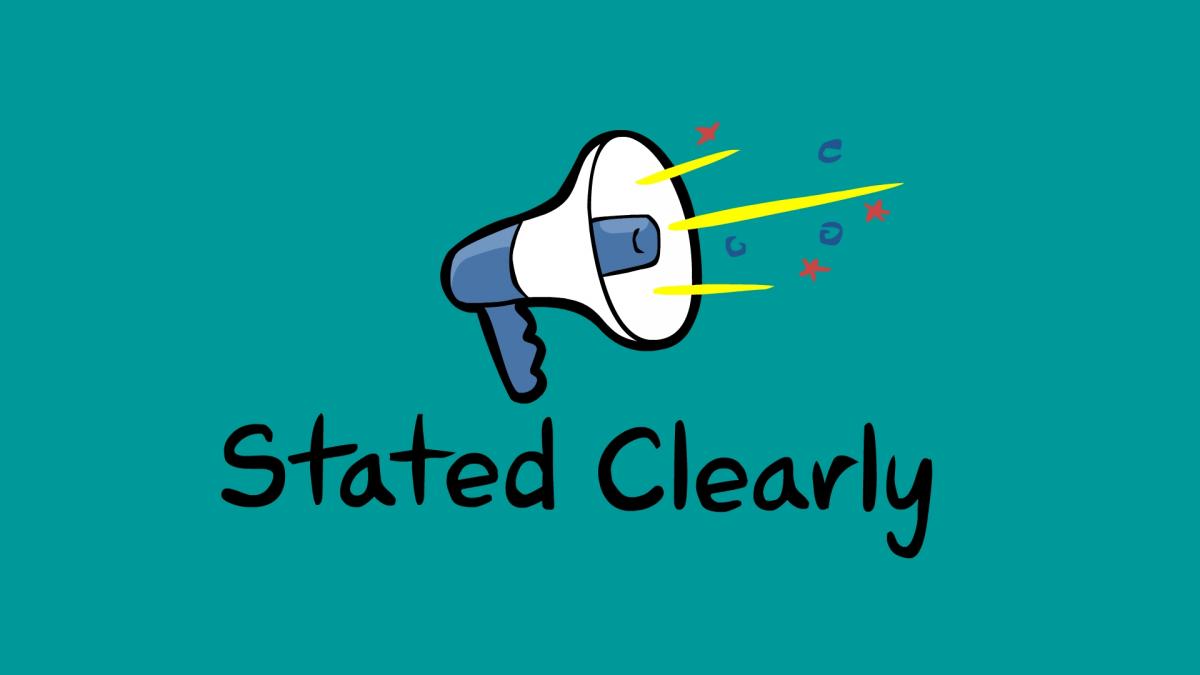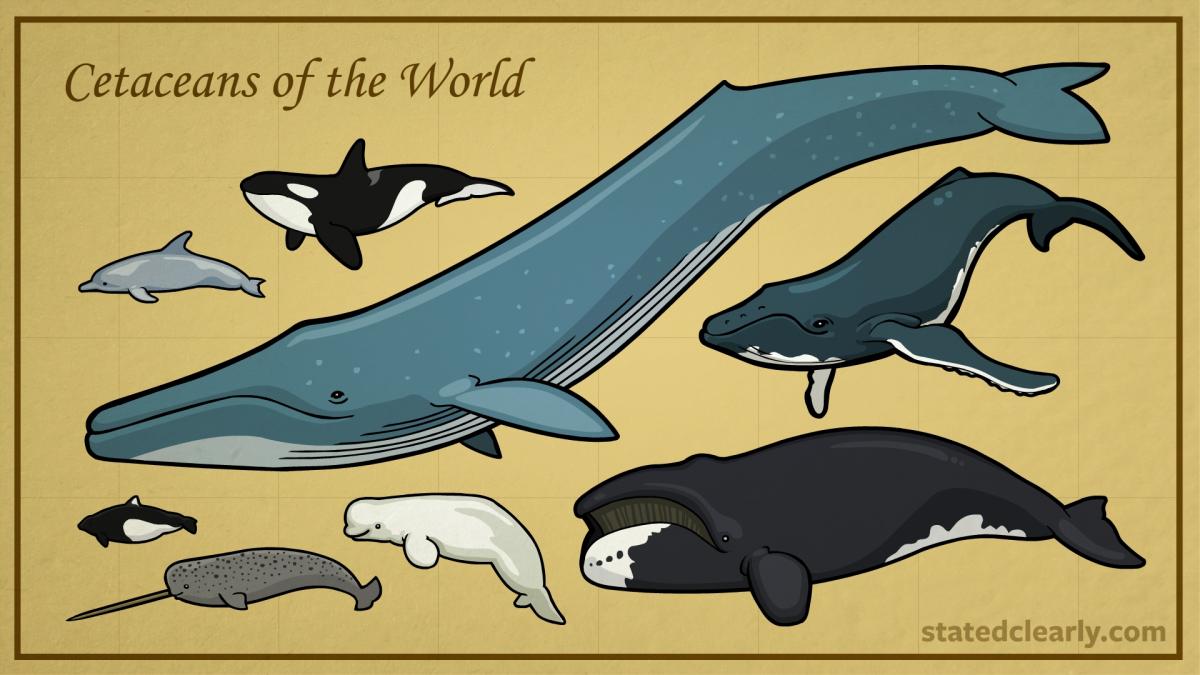 I have a few erasable white boards on my desk that I use to keep track of, well, everything. Although they are frequently commandeered by my 5-year-old to practice her letters, the boards do a pretty good job of reminding me of all I have to do. In one corner is a list of languishing blog topics. Among them, “Stated Clearly.” I can’t remember how these two words came to be on my to-blog list, but there they have sat for some time. I hate to think how much longer they would have remained had I not recently connected with Ariel Marcy to talk about her board game, Go Extinct! In the course of our conversation, Ariel asked me if I knew about Stated Clearly. Looking guiltily at my to-blog list, I admitted that I knew of it, but that was about it. She told me to check it out posthaste, and introduced me by e-mail to its founder, Jon Perry. In preparation for speaking with Perry, I watched a few of the videos on his site and got pretty darn excited pretty darn quickly.
I have a few erasable white boards on my desk that I use to keep track of, well, everything. Although they are frequently commandeered by my 5-year-old to practice her letters, the boards do a pretty good job of reminding me of all I have to do. In one corner is a list of languishing blog topics. Among them, “Stated Clearly.” I can’t remember how these two words came to be on my to-blog list, but there they have sat for some time. I hate to think how much longer they would have remained had I not recently connected with Ariel Marcy to talk about her board game, Go Extinct! In the course of our conversation, Ariel asked me if I knew about Stated Clearly. Looking guiltily at my to-blog list, I admitted that I knew of it, but that was about it. She told me to check it out posthaste, and introduced me by e-mail to its founder, Jon Perry. In preparation for speaking with Perry, I watched a few of the videos on his site and got pretty darn excited pretty darn quickly.
These short (fifteen minutes or less) animations hit the science communication sweet spot of being both engaging and rigorous, while being neither pedantic nor condescending. For NCSE, as well as for my other job of curriculum writing and consulting, I read, watch, and review a lot of educational resources, very few of which make me sit up and take notice like these did. Are they perfect? No. A few animations have some issues—but Perry knows that, and is working on improving them, which is fantastic. As if this isn’t all great enough, Stated Clearly’s origin story is tailor-made to delight NCSE members and blog readers. Read through this Q&A with Perry, and you’ll see what I mean.
I know the answer to this, but it’s such a great story: How did you come to make these animations?
 I started the project to help explain evolution to my friends and relatives. At the time, my job had moved me to a little Southern town that was highly evangelical. I found it to be one of the warmest, most welcoming communities I’d ever lived in, but my friends and neighbors would really get worked up about evolution being taught in public school. Richard Dawkins is one of my favorite authors on the subject of evolution. His work is great but often peppered with little jabs at Christianity. Unfortunately this meant that using his books to teach evolution to my religious friends was a bit like using story problems about fiery bus accidents to teach math to children. They get upset and lose focus before we can even get started.
I started the project to help explain evolution to my friends and relatives. At the time, my job had moved me to a little Southern town that was highly evangelical. I found it to be one of the warmest, most welcoming communities I’d ever lived in, but my friends and neighbors would really get worked up about evolution being taught in public school. Richard Dawkins is one of my favorite authors on the subject of evolution. His work is great but often peppered with little jabs at Christianity. Unfortunately this meant that using his books to teach evolution to my religious friends was a bit like using story problems about fiery bus accidents to teach math to children. They get upset and lose focus before we can even get started.
The other problem I’ve had is that people don’t want to give evolution their time and attention for anything more than a few minutes. This isn’t because they are slow or lack curiosity; it’s just human nature. Once we form a strong opinion about a subject, we have very little patience for alternative points of view.
I quickly realized that if I were to break through these barriers, I needed teaching tools that were friendly, as religiously neutral as possible (without jeopardizing the science), and that were short and to the point. After searching and searching for tools like this without success, I finally decided to build my own. That’s how Stated Clearly got its start.
What happened next? How did Stated Clearly animations go from a personal pet project to something being used in classrooms and displayed in museums?
The short answer is: by accident! I figured I’d put the videos online so others could use them too. My inbox quickly filled with letters from teachers and students thanking me and asking what I’d be making next. It just so happens that the first few topics I had covered aligned almost perfectly with high school biology science standards. It also helped that my parents are both educators working in public schools—they helped me spread the word. I also had a lot of help from my high school chemistry teacher, Tom Cochran, who has become a long-time friend of mine. The biggest early boost came when the Royal Institution of Great Britain found us and posted one of our animations on its site.
I love that the animations have found an audience with educators. My goal now is to continue growing and shaping this series of animations into an entire introductory course on genetics and evolution suitable for use in public schools.
So cool. Are you an educator or scientist by training?
No, I’m an artist by training, but biology has been a major passion of mine since I was a little kid. After first learning about evolution from a David Attenborough documentary, I became a closeted Darwinist. At a young age my Sunday school teacher told me that evolution was evil. I falsely assumed my parents and all other Christians thought this too. I didn’t dare tell anyone about my interests. I would read the encyclopedia in secret, quickly slamming it shut like a dirty magazine whenever someone entered the room.
Today I make up for my lack of traditional training by asking researchers to proof my work and even guide me as I write. If I find a bit of research I want to talk about in a video, I simply look at who did the research, send them an e-mail, and ask to set up a phone meeting. I’ve been amazed at how accessible scientists are, even the world’s top researchers who I know have a lot on their plate.
Which of your animations is the most popular? Does this surprise you?
By far, the most popular animation is “What is the Evidence for Evolution?” This does not surprise me; it’s my favorite too. In just a few minutes I introduce the viewer to more than eighty facts from multiple lines of evidence showing that whales evolved from land mammals. While I do use illustrations to explain concepts and present basic facts, actual photographs of bones, fossils, embryos, and anatomical structures back up all the big claims made in the video. We humans are visual creatures. We can’t help but come to the correct conclusion when shown that amount of evidence all at once.

I’m not surprised. It’s my favorite, as well. In addition to highlighting one of my two favorite groups of animals, the whales (xenarthrans are the others), I love it because you managed to avoid all of the major misconception traps! Was that an explicit goal of yours? Did you have help? Reviewers? How did this thing get so darn near perfect?
Thank you. It’s always nice to hear good things about the animations! A fun fact: toothed whales (such as dolphins) and giant armadillos (which are xenarthrans) have both survived similar mutations that broke their ability to produce molars. As a result, their back teeth all take the form of incisors. That’s one of the many things I learned chatting with Hans Thewissen—
Wait. Seriously?
Yes! He wrote about it in PeerJ. Anyway, that animation took me over a year of my spare time to write and produce. I had lots of help from scientists. Special thanks to Philip D. Gingerich and Hans Thewissen for freely providing me with almost all the photos of bones, fossils, and embryos you see in the animation. They also each spent hours with me on Skype, answering all my questions and making sure my graphics were correct.
You’ll probably get a kick out of the fact that I actually got even more help from people in the anti-evolution movement. I read everything online I could find that they had written about whales. I even bought a few books penned by anti-evolutionists (used copies, of course, so I wouldn’t directly line their pockets). I called in regularly to a radio show that I caught spreading an anti-evo message. Why? Because I wanted to learn how these folks—good-willed, intelligent, normally rational people—were weaseling their way out of accepting the facts. My goal was to create a video that they could not explain away.
Once I had my first draft of the animation ready, I posted it for review on anti-evolution forums. The reaction was amazing! I had an instant team of free, highly motivated, highly critical editors! Within hours they had poured through my script and animation, pointing out any weak spots and even finding a typo that all my normal reviewers had missed. It was truly priceless!
Well, I think it worked.
Coming up in part 2: Getting help from evolution deniers, death threats in YouTube comments, and much, much more.

